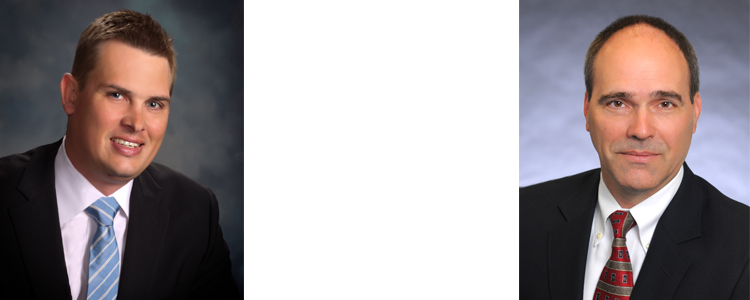(L-R) David White, Building Envelope Services Manager, Raba Kistner; Jeff Haberstroh, V.P., Senior Project Manager, Project Control
How would you describe the state of the construction industry in general terms?
Jeff: Booming! We continue to see positive movement in K-12, Higher Ed, and Municipal work. The private sector is recovering strong and will continue to engage in activities with the current administration in Washington. There is great optimism that a revised tax plan and final outcomes with health care will boost the market even further.
David: The construction industry in our region is real steady. It seams to be in a better state than other regions. It appears that there is still plenty of building going on.
Have you experienced an increase in business? Slowdown?
Jeff: Definitely an increase! We have experienced gains in many of our market sectors and see that trend holding through Q3 of 2018.
David: We have experienced a consistent 10-15% annual growth over the past few years. The past two years have definitely been busy for us. On the roofing side, the April 2016 Hail Storm has really kept us busy.
What factors are driving this increase/slowdown?
Jeff: It would be my thought that federal reserve is sending strong indicators that interest rates will continue to stay low and that financial institutions have begun to put a larger amount of available capital into the market. I see the public sector bond market being a significant contributor to the increase as well. Most major cities are planning large bond referendums for this November and May next year. The focus being on infrastructure to support large growth swings.
David: For our roof consulting services, the April 2016 Hail Storm has been keeping us real busy. Then the big hailstorm occurred in Midland/Odessa a few months ago and we are getting calls to go out there and look at roofs. In addition, with all of the downtown revitalization work happening, our waterproofing and building envelop forensic work have been real steady. The building envelope design and design peer review on the older buildings downtown has been steady work and we have had really interesting projects.
How has this increase/slowdown affected your company and how you conduct business?
Jeff: We try to manage our labor need to be "just-in-time" as a project is awarded. It is almost impossible to keep a bench waiting on the next project. This also causes stress to hire from competitors or compete with a compensation package that will attract the best-seasoned people.
David: This increase has affected us. Right now it is hard to find qualified staff. We have experienced much growth in Austin and Houston and have to assist those markets San Antonio based consultants on top of being extremely busy in San Antonio also. As a consequence, we've been spending a lot of time on the road trying to cover all of our projects.
What are the "hot button" issues in the green building industry of construction?
Jeff: I believe it has boiled down to a point's game. LEED was great 10 years ago when we needed a template to achieve a successful project with respects to saving energy cost and delivering a building that provided for better indoor quality of life. Today designers try to manipulate the scoring numbers to achieve a particular certification and check the box.
David: Solar is still a "hot button." LEED seems to have subsided a little, or so it may seem, but we are seeing a lot more designs with solar in mind.
What are the major changes in the industry in recent years related to green building?
Jeff: The 2015 Energy Code! The adoption of this standard for energy has moved the needle in a positive direction for the end user so that everyone is constructing towards a more efficient consumption of energy. This has a ripple effect as its trajectory will improve the built environment when existing buildings are renovated and it will force new construction to follow the path laid by USGBC.
David: The major changes recently have been the change the Energy Codes. They have actually changed quite a bit and the way we look at insulating buildings has changed pretty dramatically.
What are the most significant challenges your industry faces? Labor shortages? Cost increases? Training?
Jeff: Labor and training. Labor has fallen to an all-time low in the construction industry. The Texas market, and the country as a whole, remain strong and there is no slowdown on the horizon, which will continue to challenge the skilled labor force. The oil sector has dropped off in recent years and is now again making a resurgence in the various plays across the state. The result of the oil slowdown did not replenish the labor losses that were experienced in 2012. We need to change the direction at the high school level by providing a positive view towards the trades. There should be emphasis towards certified trades and skilled craftsman in the development of CTE curriculum to capture more students that have the aptitude and design to have skills and get rewarded in the process.
David: I think getting labor is still a significant challenge. Getting qualified and trained individuals to perform Building Envelope (Roofing and Waterproofing) related work is always going to be a challenge. Unlike Electrical, Plumbing, etc., we don't really have an apprenticeship or training program. A lot of times we lack adequate/thorough training for entry-level individuals.
What are the cost increases related to green building in your industry?
Jeff: Initial costs have caught up with sustainable initiatives in recent years, The 2015 Energy Code has taken this to the next level by adding as much as 10-15% to new construction. Owners need to be educated on the awareness of the cause and effect of buildings brick and mortar material increase, not just the cost for the plaque on the wall.
David: As the codes change and new "testing" requirements are being added during the construction phase, we are seeing general contractors have to budget for this. With commissioning and testing and balancing of equipment in new buildings, you are seeing the cost increase with those requirements and also with ensuring that the building is being constructed properly as to meet these requirements.
How are you dealing with these challenges?
Jeff: Educate, educate, educate! We must provide our owners with all the information, layout the options, describe the causes and effects, present multiple solutions and choices so that carefully informed decisions can be made. Provide for the best opportunity for their project to achieve the desired outcome within the available funds or i) increase the budget or ii) cut back the scope to get the desired outcome.
David: As the roofing design consultant, we are making sure that the architects that are leading the design, the owner and the contractor are all aware of the project requirements. With the new code changes in affect, it seems like everybody is still getting used to the new requirements and actually what the new codes are.
What is on the horizon for the green building industry? Changes in technology; changes in codes; ordinance or laws; other?
Jeff: All of the above! Technology will change the industry as computerized equipment advances in coming years. The codes need to keep up with the rapid advances in technology as Smart Building draws from advances in building automation systems. Our legislators need to relax the efforts to effect laws and ordinances that will increase unfunded mandates to cities and allow the market to drive the positive changes towards conservation. The AEC community want to (and in many cases adopt policy) design towards a more resource-conscious conclusion for their clients.
David: The major changes recently and going forward will be the changes to the Energy Codes, They have actually changed quite a bit and the way we look at insulating buildings has changed pretty dramatically.
What are the rewards of the green building industry?
Jeff: There are many rewards, although we must choose the one that best fits for our clients and our projects. Today you can't achieve everything on every project. Extended consequences are in the form of having to pay for building new power generation, or delivery of additional water, or keeping operational cost low for profitability. Extending equipment life cycles for maintenance and operations rewards. Again, educate the owner to provide the best chances for reward that is right.
David: Well, the rewards are supposed to be a building that is built efficiently and environmentally responsible. Or, one that is efficient from the beginning through the end of its life cycle.
What is the key to being successful in the green building industry?
Jeff: Best management practices (BMP's) will set you up for success every time. Knowing what is right, practical, and achievable on each project will most certainly provide you with success. Not every project is the same and what worked in Dallas will not work in Seattle.
David: I think just understanding it. Sometimes we get too caught up in "efficient" or "sustainable" and end up with a building that doesn't perform well or is way out of budget to even construct. We might have checked all the boxes as far as building "green" or having a "sustainable" building, but have parts or pieces that are not compatible, or materials that we actually cannot obtain and then have a price tag that is way over budget.
Proven Project Management Experience. Project Control (a Raba Kistner Company) is a Texas-based construction Project Management firm with over 38 years of experience managing a wide range of construction projects.
Raba Kistner Inc., founded in 1968, is an Engineering News-Record "Top 500 Firm," operating in thirteen different markets in Texas, Utah, New York, Oklahoma and Mexico. Headquartered in San Antonio.
Source: San Antonio Construction News, September 2017: http://bit.ly/2hvna4d

